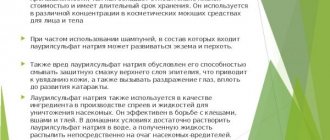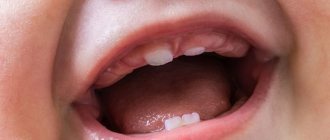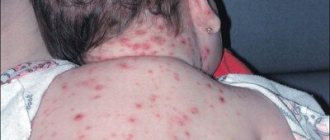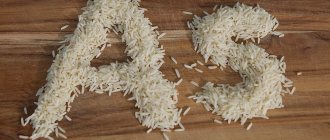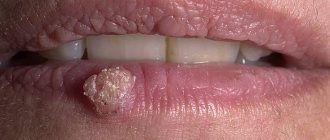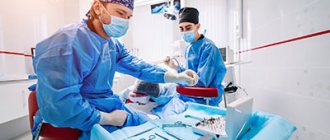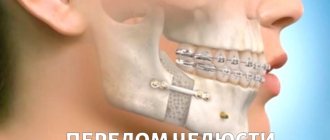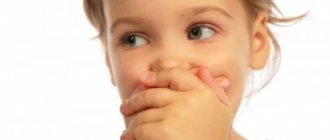Teething in an infant is a very exciting moment in the life of the baby and his parents. And although teething is a physiological process, almost all children experience discomfort and anxiety during this period. From the point of view of a scientific approach to this problem, the difficulty lies in the fact that with all the variety of teething symptoms from mild restlessness and moodiness, increased salivation to an increase in body temperature to high numbers and signs of impaired digestion, increased colic and diarrhea, there are no sufficient diagnostic criteria to connect all these numerous symptoms to the root cause. Nevertheless, many parents and some practicing pediatricians are still ready to blame the baby’s teething for almost all the troubles that befall them in the period from 5 - 6 months to one and a half - two years, when the teething process is mainly teeth should already be completed.
Most children begin teething between the ages of 4 and 7 months. As a rule, the eruption of each tooth lasts from 2 - 3 to 8 days. During this time, it is possible to increase body temperature to 37.4 - 38.0 degrees. At the same time, high temperature (from 38.0 and above) usually lasts no more than 2 days. Nasal discharge during the period when teeth are erupting is usually transparent, liquid, and should not contain pathological impurities: pus, greens, etc. Cough during teething is caused by saliva entering the nasopharynx and larynx area, which is released in large quantities. Cough due to teething does not require treatment. Regarding diarrhea, pediatricians sometimes differ in their opinions: some believe that diarrhea (loose stool) is not directly related to teething. And yet, studies have shown that from 10 to 30% of children have frequent and/or loose stools during teething. This is also explained by the large amount of saliva secreted, which enhances intestinal motility.
Causes of the rash
Due to the fact that the baby is going through a period of adaptation to the environment in his life, rashes on the body are not something supernatural. This is how a very small organism perceives life changes.
Often this phenomenon is due to completely different reasons that have nothing to do with the growth of baby teeth.
The following reasons are probable:
- The body's sensitivity to innovations in nutrition.
- Allergy to household chemicals.
- Excessive salivation as baby teeth grow.
- Genetic predisposition to allergies.
- The influence of external stimuli on a young, fragile organism.
Teething
Skin rashes may appear as a result of exposure to one of the listed factors.
It is very difficult to understand the true cause of irritation and say unambiguously whether it is related to tooth growth or not. Taking into account the true cause of the rash, appropriate therapy is prescribed.
Treatment of imbalance in newborns
There is no need to rush into introducing different bacteria into your baby’s diet. An experienced doctor will most likely initially recommend that a young mother arrange meals for her baby according to a specific schedule. The main thing is not to overfeed the baby and allow the microflora of the stomach to form on its own. Treatment will only be required if test results require it.
You can introduce medications into the treatment process for dysbiosis only if your doctor prescribes them for you. It is worth remembering that treatment should be solely for the benefit of the baby. Imbalance at this age can be treated over a fairly long period of time.
At the moment, there are a number of drugs that are enriched with bacteria required for treatment:
Rash and teething: how they are connected
It's no secret that during the period of growth of baby teeth, babies become very irritable, as the process is accompanied by severe pain and discomfort. The baby sleeps little, his gums itch, and he cries constantly. Due to severe stress, salivation increases.
The occurrence of a rash is caused by the body's reaction to such a shock. A teething rash, as in the photo below, has a special medical name - “cytokine explosion.”
The appearance of rashes in a baby may be due to a reaction to some unknown product, household chemicals, or clothing. An infection may be to blame. In order to correctly determine the appearance of irritation on the skin, it is necessary to undergo a special medical examination and pass all the necessary tests.
Taking into account the results of the examination, therapeutic tactics are determined.
Are there any complications?
Acute urticaria in children can have a dangerous complication - Quincke's edema (giant urticaria, angioedema). It consists of swelling of the mucous membrane of the respiratory tract. The child has coughing attacks and has difficulty breathing. Very young children may experience swelling of the gastrointestinal mucosa (the reaction to this is vomiting). In severe cases, the membranes of the brain and nervous system are affected. Any of these conditions is very dangerous and can be fatal. Therefore, it is very important not to delay visiting a doctor if there are signs of illness.
Important! Many parents do not know what to do with Quincke's edema. You should immediately give your child an antihistamine (any one from your home medicine cabinet) and call emergency medical help.
Localization of rashes
There are likely to be different stages and phasing of the appearance of rashes in a baby as a result of teething. Most often, skin irritation makes itself felt in the neck area. The process then spreads to the limbs, abdomen and other parts of the baby’s body.
The rash on the teeth may be dry, somewhat rough, and accompanied by a strong burning sensation. Often the nature of the occurrence of such a phenomenon affects not only close people around the baby, but also experienced doctors.
It is worth emphasizing once again that this is a peculiar reaction of the body to many provocateurs, each of which requires special attention.
Prerequisites for the occurrence of dysbiosis in newborns from the first days of life
Late breastfeeding is not the only one of its kind, although it is the main cause of the development of dysbiosis. There are still a sufficient number of different factors that directly affect the development of imbalance in newborns. Among these factors is antibacterial therapy in the early period of the baby’s development.
In particular, the more antibiotics are used, the greater the disruption of the correct microflora of the newborn.
If the mother used antibiotics before the birth of the child, then they will be present in breast milk in any case. As a result of breastfeeding, they will enter the baby’s body. Therefore, it does not play an important role who took antibiotics: the mother or the baby himself.
Rashes on the body
Most often, a rash on a child’s teeth appears in the most visible areas - the neck and face.
A similar phenomenon occurs in many places. It may be difficult to see and roughness may form on the baby’s skin. This phenomenon can be due to many reasons:
- baby's reaction to stressful stimuli . This period in a child’s life is very difficult and simply cannot be completely painless. At the same time, the load on the psyche increases significantly;
- Another serious cause of this phenomenon may be a lack of calcium. This is due to the simultaneous eruption of several teeth, which implies the need for an increased dose of calcium. The lack of this component is reflected in skin rashes.
Skin reactions should never be ignored. At the time of occurrence, you should not buy new clothes for your baby; all things, household chemicals and household items should be hypoallergenic. You should also not forget about nutrition; be sure to adjust your child’s diet.
Disease prevention methods
There are no special preventive measures. However, you can minimize the risk of developing the disease by following these recommendations:
- control the child’s diet;
- exclude contacts with potential allergens - food, volatile, contact;
- have an antihistamine in your home medicine cabinet;
- buy your child loose clothes made from natural fabrics;
- do not provoke stress in the child;
- do not trigger chronic diseases.
Sources:
L.V. Luss. Causes and treatment of urticaria in children // Medical Council, 2015, No. 14
I.I. Balabolkin. Urticaria in children: clinical and pathogenetic variants, diagnosis and treatment // Russian Pediatric Journal, 2022, 20(2)
L.P. Sizyakina, A.A. Lebedenko, C.B. Maltsev, A.N. Posevina, L.A. Averkin. Urticaria in children: a modern view of the problem // Medical Bulletin of the South of Russia, Reviews, 2015
The information in this article is provided for reference purposes and does not replace advice from a qualified professional. Don't self-medicate! At the first signs of illness, you should consult a doctor.
Signs on the face
Most often, a rash on a child’s teeth makes itself felt in the most visible areas – the neck and face. Folk remedies usually do not help with such phenomena, since self-diagnosis by parents, grandmothers and other family members cannot be correct. This requires a professional approach.
It is worth noting that the use of various ointments in infants for other purposes does not usually end well , but only entails a number of unpleasant consequences. It makes sense to undergo a full examination in order to establish the correct diagnosis.
A characteristic phenomenon often occurs due to banal non-compliance with hygienic principles by the baby’s parents. This is especially evident when using low-quality household chemicals . That is why cosmetics, detergents and laundry detergents for babies should be selected very carefully.
During the period of growth of baby teeth, a baby's immunity weakens due to severe stress, which results in rashes on the face.
Burning and rash on the neck
When a rash appears, it is recommended to give the child herbal baths.
It is worth noting that the rashes do not appear on their own. Usually, symptoms during teething occur all in a heap: irritability, intense salivation, fever. In this situation, herbal baths are very effective.
It is useful to take baths with celandine, chamomile and other anti-inflammatory plants . After the bathing procedure, it is advisable to lubricate the baby’s body with healing ointments. In this situation, good old baby cream often saves the day. You can use special creams containing panthenol.
Aerial procedures have a special effect. With severe burning, even the use of soft clothing has a strong irritating effect. Air baths provide effective treatment for skin rashes.
How to speed up the process
Often, adults look forward to teething, but there are still no symptoms. What to do in this situation? Until the tooth grows completely, the process is accompanied by many difficulties. The very first obstacle is the bone and crown. After this, the tooth also overcomes the mucous part, which is quite difficult, because this tissue is quite elastic.
To stimulate the teething process, the baby’s saliva contains special components that straighten the mucous membrane and promote the rupture and birth of the tooth. In addition, baby saliva is an antibacterial liquid that helps fight infection, which often occurs as a result of tooth growth.
Adults should take note of the fact that it is impossible to speed up the natural process of tooth growth. This is not at all practical or relevant. No drugs will help.
All products containing calcium will be excreted from the body and absorbed only in small quantities. Moreover, a lack of calcium has nothing to do with it. Medicine does not yet know a clear answer to the question of what exactly causes teething.
The main theory is the formation of the root of the baby tooth , which stimulates the movement of the latter. Of course, growth requires nutrients, but it also takes time for cells to divide.
Teethers help ease your baby's teething condition.
Particularly brave parents decide to undertake the absurd procedure of cutting gums on their own. Such measures are unacceptable. First of all, you will cause severe pain and injure the tissues of the tooth that has not yet sprouted, and also cause an infection.
Such manipulation is done only in dental offices and is used only to stimulate the growth of figure eights.
To alleviate the baby's condition by speeding up the teething process, he needs to be given special teethers. All hard and tough products are suitable for this purpose. Never give your baby a sugar cube . This is a grave mistake that many grandmothers make.
